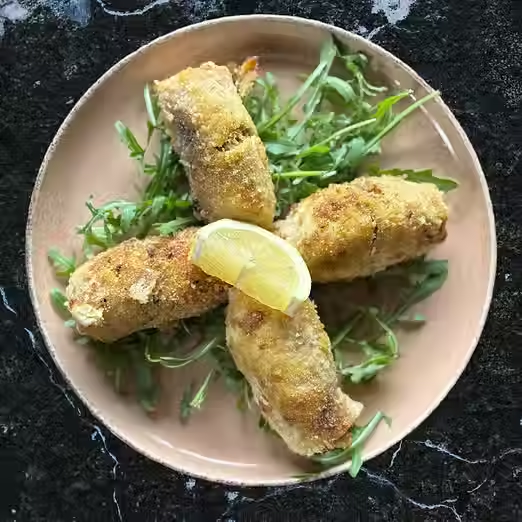Rustic Orange Crostata: A Quiet Slice of Winter Light
- Made al Dente

- Jul 1
- 3 min read
A gently spiced crostata made with stone-ground flour and Sicilian orange marmalade — prepared just before Christmas, on a cold grey day in the Oltrepò Pavese.

It was just before Christmas — one of those still winter days when the sky hovers between dusk and silver. There was no snow, but the chill in the air was enough to nudge you indoors and into the kitchen. I remember the smell of citrus that afternoon — sharp, sweet, and familiar — wafting through the warm house as I opened the jar of orange marmalade I had made only a week before, using a box of oranges sent up from Sicily. They arrived like a sun-soaked gift, still dusty with soil and full of life, just when everything else around was bare and grey.
My parents were coming over for dinner. It had become a quiet ritual in the weeks leading up to the holidays: a home-cooked meal, a fire crackling softly, and something baked for the table. Not overly elaborate, just something good. That day, it was this crostata — rustic, orange-scented, and not too sweet. The kind of dessert that doesn’t shout but lingers. A crust made with semi-whole wheat flour, warmed with cinnamon and lemon zest, filled generously with marmalade that struck the perfect balance between bitter and floral.
There’s something about baking with marmalade that feels both humble and luxurious — like eating a preserved moment of sunshine. And so the dough came together quickly, no butter this time, just sunflower oil and eggs. Rolled out roughly and pressed into a tart pan, the marmalade spooned thickly on top, then latticed gently with strips of dough that broke a little as I worked them — which I liked even more.
When it came out of the oven, the scent was soft and golden: toasted flour, orange peel, and that faint whisper of cinnamon. We had it still warm, with coffee after dinner, while my father asked for a second slice and my mother said it reminded her of a crostata she had growing up, only less sweet.
It’s the kind of recipe you return to not just for the taste, but for the calm it brings. A rhythm you settle into. Something to anchor you in the season.
Notes for the Cook
SERVES: 10 | PREP TIME: 30 minutes (plus resting) | TOTAL TIME: 1 hour 30 minutes
Ingredients
For the crust:
350g (3 cups) semi-whole wheat flour
120g (½ cup) granulated sugar (or raw Demerara)
1 tsp ground cinnamon
Zest of ½ lemon
3 whole eggs (medium)
80g (⅓ cup) sunflower oil
For the filling:
250g (1 cup) orange marmalade — ideally a bitter-sweet one, homemade or of high quality (with both oranges and lemons, if possible)
Quick Steps
Mix the dough: In a large bowl, combine flour, sugar, cinnamon, lemon zest, and a small pinch of salt. Make a well in the center, add eggs and sunflower oil, and begin mixing with a fork until a shaggy dough forms.
Knead and rest: Transfer the dough to a lightly floured surface and knead gently for 5–7 minutes until smooth and cohesive. Wrap in plastic wrap and rest in the fridge for 30–45 minutes.
Preheat the oven: Set your oven to 180°C (350°F). Grease and flour a 26–28cm tart pan or shallow baking dish.
Roll and assemble: Roll out about 2/3 of the dough into a circle roughly ½ cm thick. Lay into the tart pan, pressing gently into the edges. Spread the orange marmalade evenly, leaving a narrow border.
Create the lattice: Roll out the remaining dough and cut into strips. Place them over the marmalade in a crisscross pattern — rustic is beautiful here.
Bake: Bake on the middle rack for around 50 minutes, or until the crust is deeply golden and the marmalade bubbles softly through the lattice.
Cool and serve: Let cool for 10–15 minutes before slicing. Serve with a cup of tea or espresso, and a window open just enough to feel the winter air.
Top Tips
Flour choice matters: Semi-whole wheat (type 1 or 2) gives the crostata an earthier texture and a richer flavor than white flour. It also pairs well with the brightness of citrus.
The magic of citrus: Marmalade isn’t just a filling — it’s the soul of this recipe. Look for jars made with Sicilian blood oranges or Seville oranges for that signature tang.
Seasonal ritual: This is a winter dessert — rooted in the quiet post-harvest months when preserves are king and slow baking feels like ceremony.


